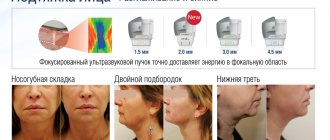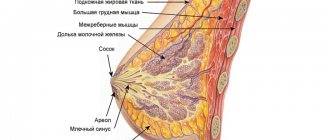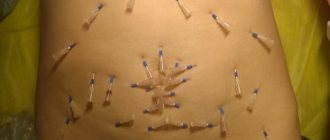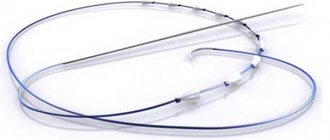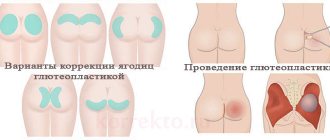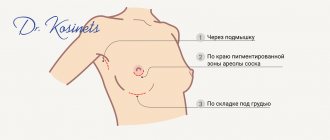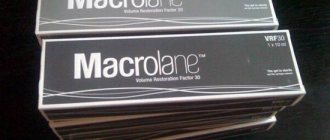Women are ready to do a lot for the sake of beauty, some even go on the operating table, risking life and health. Breast augmentation is becoming an increasingly popular procedure, despite the obvious risks: the presence of a foreign body inside cannot go unnoticed by the body. There are alternative methods for restoring or changing the shape of the breast, and we will talk about one of them in the material - this is a thread lift.
Thread lifting - the essence of the procedure
You should not compare a thread lift with plastic surgery and place high hopes on it. Thread lifting has a number of contraindications and is not suitable for every girl.
A breast lift with thread is not aimed at enlarging the breasts, but at correcting the shape and returning the former firmness. The non-surgical method is indicated only for those girls who have sizes 1-3 and have bust ptosis. Special threads are introduced into the mammary glands, which, in addition to supporting the breasts, activate the production of collagen and elastin, and then dissolve without leaving a trace.
What is a thread breast lift?
Loss of shape by the mammary glands can happen to a woman of any age. This organ is regulated by hormones, the amount of which determines the size and appearance of the breast. It is designed like a bag: covered with leather and extends beyond the skeleton.
Due to the changes that occur, the cover stretches and the bust loses its shape. To restore the appearance, you can fill the voids that have formed, or you can strengthen the frame. The second method is more preferable, since in this case a minimum of artificial materials is used. This technique is considered a thread lift.
In this case, a special hypoallergenic biomaterial is implanted into the breast. It creates a foundation that supports the mammary glands in the desired position. This occurs due to the threads becoming overgrown with their own tissues. In this way, not only is sagging prevented, but volume is also added due to the formation of new cells. The combination of these effects and the low risk of complications has made the procedure popular.
Why do breasts sag?
Breasts can become deformed for various reasons. Women's breasts are sensitive to weight gain and loss, and rapid weight loss can cause sagging and sagging skin. Hormonal surges, pregnancy and lactation, age-related changes, and improper installation of implants can lead to loss of elasticity and tone.
Correction of breast contours becomes not so much a matter of aesthetics, but rather an intervention prescribed by a doctor: breast ptosis can lead to serious inflammatory processes in the mammary glands, osteochondrosis and curvature of the spine.
The main advantage of thread lifting is that there is no surgical intervention during the cosmetic procedure.
Why do breasts sag?
Do you dream of a beautiful figure? Find out everything about breast lift with threads
There are many reasons why women turn to a cosmetologist about sagging breasts and decreased skin elasticity. These include age, the consequences of childbirth and breastfeeding, sudden weight loss, etc.
But besides this, very often breast lifting has to be done according to the indications of the attending physician. Breast ptosis is the cause of inflammatory processes in the body, the development of osteochondrosis and poor posture. Then women begin to look for a more effective, and, not least important, safe way to tighten the mammary glands. A popular method called Thread lifting solves all these problems.
Surgical correction and lifting of the mammary glands should begin with an examination, at a minimum, a breast ultrasound, and at most a mammogram.
What are mesothreads and thread lifting of the mammary glands?
Thread breast lift is a non-surgical correction method aimed at improving the shape of the mammary glands.
Thread breast lift has both disadvantages and advantages.
Minuses:
- High price.
- Contraindications for the procedure.
It is worth understanding that there is a huge difference between the method of ligature lifting of the face, the weight of the tissue is grams, and the breast, when the weight of the tissue is 200-300, and sometimes 500 grams of the volume and weight of the breast.
No thread can withstand this volume, and many women experience disappointment from using these methods.
Therefore, a thread lift is not performed if a woman has large breast size (third or more) and severe sagging breasts.
pros:
- Use of local anesthetic. There is no need for general anesthesia, which makes it very easy for the patient to monitor the procedure of the operation.
- Minimum period of rehabilitation and restoration of a woman’s body.
- No scars after surgery. Small skin incisions are made, which after time quickly heal and become invisible. Skin punctures are necessary to insert threads.
- The operation is performed without introducing foreign bodies (implants, fillers) into the body.
- Improving metabolic processes in a woman’s body. Some threads contain polylactic acid, which increases blood flow and improves the overall condition of the skin.
What materials are used for the procedure?
Breast lifting is performed with different types of threads of 2 groups:
- Absorbable.
- Non-absorbable.
Absorbable threads contain polylactic and lactic acid, polydioxanone. The second threads are made of polypropylene, gold, platinum.
Absorbable threads are divided into:
- Aptos threads (Aptos Excellence Body) . Domestic Aptos threads. Aptos Excellence Body threads are used to correct sagging breasts of size 2 or more and prevent breast ptosis. Contains L-lactic acid.
- Resorblift threads . These threads contain lactic acid. They are hypoallergenic and do not cause rejection by the body. Moreover, thanks to them, elastin and collagen are produced.
- Silhouette lift Soft threads . Silhouette lift Soft threads contain polylactic acids. When the threads are absorbed, they create cones, after some time connective tissue forms around them. They solve problems of sagging, breast asymmetry and help in correcting the shape.
- Mesothreads . Made from polydioxanone, which is coated with polyglycolic acid. They solve the problem of sagging mammary glands because they are made without notches or knots that can hold breast tissue in the desired position.
Non-absorbable are divided into:
- Aptos threads (Aptos Needle) . Made from polypropylene. Such breasts are used for large breasts, as they are injected to the depth of subcutaneous fat.
- Precious threads . Made from platinum and 999 gold. They form a frame that prevents the breasts from sagging.
Indications and restrictions
The breast lift procedure is performed in the following cases:
- Ptosis of the patient's mammary glands, with preservation of the volume of glandular breast tissue.
- Prevention of ptosis. Prevention is recommended after mastopexy and breast reduction surgery.
There are a number of specific reasons why the procedure is not performed:
- Breast size larger than 3.
- Severe sagging of the mammary glands.
Contraindications for thread lifting may include::
- pregnancy and breastfeeding;
- infectious diseases;
- oncological diseases;
- allergies and others.
They must be taken into account; non-compliance is dangerous to health.
Stages of the operation
The lifting procedure lasts on average about 2 hours. The time spent on the procedure is mainly affected by the number of threads that will be needed. In many cases, 4-8 threads are enough for each breast. The length of one thread is 7 cm .
- The patient lies down on a couch or chair in the operating room or treatment room.
- The doctor draws a special marking along which the threads will be inserted in the future.
- The cosmetologist administers intravenous anesthesia before the procedure; in extreme cases, local anesthesia is used.
- Before starting the manipulations, the breasts are treated with an antiseptic. The operation consists of sewing the breasts in different directions, thereby forming a frame that will subsequently support the breast tissue.
- First of all, punctures or cuts are made in order to insert the thread with a certain needle 3-5 millimeters.
- After inserting the needle to the desired depth, it is carried out along the depicted contours to the designated site of the next puncture.
- Next, the needle is removed, the thread is cut, and the skin is again disinfected with an antiseptic.
- After the procedure, a patch is applied to the injection or incision sites; a special sterile bandage may be needed.
- Be sure to apply cold for 20-30 minutes to the injection sites or incisions.
Photos before and after correction
Below are photos before and after a breast lift using mesothreads.
Efficiency
It is important to understand that the effectiveness of thread lifting depends on several components. This includes the number of implanted threads, the level of installation, and the distance between them. Also, do not forget about the doctor’s experience and qualifications .
You should not wait for results immediately after the procedure. In about 3 months, the stretched skin shrinks with the help of a frame due to cell renewal. At this time, damaged cells with broken connections are replaced with new ones.
The duration of the effect is influenced by the type of threads used. Absorbable threads last from 1 to 3 years. Non-absorbable - from 5 to 10 years.
Price
Thread lifting is an expensive procedure . Its cost depends on:
- the type of threads used (absorbable or non-absorbable);
- manufacturing company;
- the required number of threads for the operation.
The cost of the procedure consists of the cost of the threads used . Aptos threads cost from 5,000 rubles per piece.
The cost of mesothreads is 750-2000 rubles per piece. The average cost of the procedure, which includes the cost of threads, is from 90,000 to 100,000 rubles.
You can find out more about how much it costs and how a gold thread lift on the chest and face is performed here.
Choosing a clinic
It is important to understand that you should not save on this procedure, because, as you know, the miser pays twice. You need to choose not by price, but by quality.
In the modern world there are many ways to search for information, the Internet is the easiest of them.
You need to prepare, read reviews about the clinics and the doctors who work there. Pay attention to negative reviews. You should definitely consult with a specialist and do not hesitate to ask all your questions.
So, after weighing all the pros and cons, you can confidently move towards change. However, do not forget about contraindications before resorting to this method of figure correction.
We invite you to watch a video about what the breast thread lift procedure includes:
If you want to be the first to know about the release of new articles or you are simply more accustomed to reading on VKontakte, then join our group “Beauty Secrets” and stay up to date with all the news in the beauty industry.
Subscribe!
Source: https://beautyexpert.pro/kosmetologiya/inektsionnaya/tredlifting/nitevoj-lifting-grudi.html
Contraindications to thread lifting
- Breast size is larger than third.
- There are keloid scars or prerequisites for their formation.
- Worsened breast ptosis.
- Serious blood diseases and infections.
- Presence of cancerous tumors.
- Diabetes of both types.
- Pregnancy, breastfeeding.
- Individual intolerance to components in medical threads and allergic reactions.
Before deciding to have a breast lift, you need to sensibly assess all the risks, study contraindications and consult with a competent specialist. Start with your attending physician - he has all the information about your diseases and the condition of the body as a whole.
Contraindications to thread lifting
Features of the breast lift process using threads
Age-related and natural changes (breastfeeding, lack of exercise, genetic predisposition) lead to sagging female breasts. Some representatives of the weaker half think that only plastic surgery can correct the situation, not knowing about a breast lift with threads. This contouring procedure improves the shape of the breasts, but it is not suitable for everyone.
What is a breast lift with threads?
Over time, everyone's soft tissues stretch, this becomes especially noticeable on large breasts; their drooping state looks unattractive and the woman herself suffers at the sight of her bust that has lost its elasticity.
Although plastic surgery guarantees correction of the defect, it entails some limitations, a long recovery period and is associated with increased trauma. Few people agree to have their skin and tissue cut and then live with scars, even if they are small.
Women over 30 who experience problematic sagging of the bust are offered to undergo a breast thread lift procedure to improve its shape. At the same time, you can increase your bust size, but only by one size.
What threads can be used?
In surgery, there are special threads that spontaneously dissolve, or their non-absorbable analogues are used. The consumable material has a textured surface for reliable fixation. The choice of one of the thread options depends on age, bust size, subcutaneous fat and expected results.
Indications and contraindications
Limitations for breast lift with threads exist if a woman is prone to or has:
- to the formation of scars and keloid scars;
- allergies;
- oncological diseases;
- autoimmune and infectious diseases;
- inflammatory processes occur in her body;
- she is pregnant or undergoing breastfeeding;
- fungal, bacterial and viral diseases;
- diabetes;
- diseases associated with the blood system.
Considering that the lift has a number of limitations, its use can only be justified in certain cases:
- to eliminate breast ptosis, when the tissue and volume of the bust have retained their normal values, and the ptosis has not very pronounced signs;
- for the prevention of mastoptosis, after operations to reduce the mammary glands in order to prevent their sagging in the future;
- to tighten breasts that have just begun to sag.
How is the procedure done?
The threads are inserted to a depth not exceeding 5 mm, but so that it is invisible on the surface of the bust. This introduction eliminates damage to nerves and blood vessels; a special needle is used for insertion, so that it can be easily positioned in a given projection, barely noticeable incisions are made.
The process of breast lift using mesothreads and their analogues is as follows:
- The doctor applies markings on the patient’s bust along which the threads will pass.
- Anesthesia is administered subcutaneously; if the amount of work is small and the patient has a low sensitivity threshold, then they may limit themselves to local anesthesia.
- The area involved in the procedure is treated with an antiseptic.
- Prepared threads in an amount of 4 to 8 pieces are cut up to 7 cm in length. The breast is stitched in the directions chosen by the doctor.
- After removing the needle from the tissue, its remainder is cut off, the area is covered with a band-aid and ice is applied to it, which lasts for up to half an hour.
The entire tightening procedure lasts about 2 hours.
Recovery period
After the procedure, the breasts should not be touched, much less massaged; they should be carefully lubricated with special products to resolve bruises and reduce swelling.
Twice a day, the puncture sites are treated with an antiseptic to avoid infection and the appearance of pus, and do not forget to apply ice as often as possible.
If the patient feels pain, then she needs to take painkillers.
You can move your arms freely and play sports only after two weeks, at which time you can move on to salon procedures aimed at improving the shape of the breasts and improving the lifting effect of a thread lift.
Saunas and warm baths are prohibited; you should limit yourself to taking a shower for a month.
The final result can be seen in 3 months, at which time all restrictions will be lifted.
Possible negative consequences
Depending on the client's characteristics and physical fitness, they may encounter the following:
- Retractions. When longitudinal dents suddenly appear on the surface of the chest, they appear between the sewn threads; in such places, the skin seems to sags due to its loss of elasticity.
- Weak bust tightening. With age, solving the problem of sagging breasts becomes more difficult, and sewn-in mesothreads cannot sufficiently tighten the tissue.
- Visibility of threads. Sometimes, when the material is close to the surface of the skin, they begin to shine through it or over time they themselves move closer to the epidermis. They appear as thin stripes.
- Inflammation. The lesion is located at the sites where the threads are inserted, which occurs due to non-compliance with recommendations during rehabilitation.
Effect of thread breast lift
If you decide to have a bust lift with threads, you should expect:
- noticeable improvement in breast shape;
- minimal recovery period, no need to take time off from work for several months;
- tissue condition improves;
- after the procedure there are no scars or other visible signs of surgery.
A breast lift with threads makes it possible to restore the lost elasticity of a small bust without surgery or installation of implants. Metabolism and tissue condition improves.
Source: https://lifting-info.ru/telo/podtyazhka-grudi-nityami-chto-eto-takoe-vidy-nitej-protivopokazaniya-i-effekt.html
What types of threads are there for breast lifting?
A thread lift is the drawing of special threads along the contours of the breast, which, depending on the type, can dissolve, create a frame, or trigger the production of substances necessary for the elasticity of the mammary glands. What types of threads are there?
- Aptos are domestically produced threads, which are divided into two types: AptosExcellenceBody and AptosNeedle.
- AptosExcellenceBody is based on lactic acid and dissolves some time after injection. They are suitable for a bust no larger than size 2, which for some reason has lost its shape.
- AptosNeedle are made from dissolvable polypropylene. They are injected deep into the subcutaneous fat of the breast.
- Resorblift produces lactic acid and does not require removal. The threads are not rejected by the body, do not provoke acute allergic conditions, and additionally synthesize elastin for ligaments and skin.
- SilhouetteliftSoft. Polylactic acid threads. An important difference is the ability to form cones as they dissolve, becoming overgrown with subcutaneous connective tissue. The effect allows you to effectively tighten your breasts with bust asymmetry and sagging mammary glands.
- Mesothreads are polydioxanone threads with polyglycolic acid. They are introduced for preventive purposes, as a preventive measure for sagging and deformation of the glands, skin and nipple.
- Threads with a gold or platinum component. A strong breast frame is created from insoluble threads, which ensures that the breast remains firm for a long time.
Breast lift with Aptos, gold, planin and mesothreads
A breast lift with threads is a minimally invasive procedure aimed at correcting the shape of the breast. It started recently, but despite this it has become quite popular. We will talk in more detail about the characterizing features of thread lifting in this article.
What is a breast lift with threads?
A woman's breasts consist of mammary glands, as well as connective and fatty tissue. At a young age, the organ is characterized by a high level of elasticity due to the presence of a flexible frame formed by Cooper connections.
Under the influence of a number of reasons, the structure of the breast changes, the ligaments, along with the tissues of the skin, begin to stretch, as a result, the organ sinks, losing its former attractiveness and shape.
Provoking factors for this process may be:
- pregnancy
- breast-feeding
- sudden change in body weight
- hormonal imbalance
- age-related changes
The salvation in this situation is a breast lift without surgery with threads. Special threads are introduced into the subcutaneous tissue; they form a fibrous capsule. After this, they are tightened, the tissues are moved to the required position. As a result, the breasts become more elastic, acquire an attractive appearance, and a slowdown in age-related changes is observed.
Benefits of the procedure
The main advantages of thread breast lift are:
- no need for general anesthesia, the procedure is performed under local anesthesia
- short recovery period
- no scarring on the breast skin
- absence of large foreign bodies in the organ
- low level of trauma from the procedure
- improvement of breast tissue condition
- reasonable price, especially when compared with plastic surgery
Lifting contraindications
Despite the large number of positive aspects associated with a breast lift with threads, not everyone can undergo a thread lift. The main contraindications are:
- large breast volume (more than 2)
- gestation period
- breast-feeding
- having allergies to medications
- infectious diseases in the acute phase of their course
- diabetes
- malignant neoplasms
- problems with blood clotting
- severe sagging of the glands
- skin diseases of viral, fungal or bacterial origin
- inflammatory processes on the skin
Possible risks and complications
The use of low-quality material or violation of the procedure technique can cause:
- formation of longitudinal retractions
- thread discharge on the chest
- soft tissue eruption
- infection and the formation of an inflammatory process
What threads can be used
Depending on the situation, health status and individual characteristics of the patient, the selection of material, namely threads, is carried out. Let's look at the characteristics of the most popular of them.
Aptos
Aptos threads are manufactured by domestic manufacturers, they can be:
- Absorbable - AptosLightLiftBody. They contain polylactic acid; over time, they dissolve in tissues, forming a framework of collagen and elastin. Such threads have a rough surface with the presence of knots and notches; it is thanks to this that the tissues are fixed and maintained at the required level. They are used in most cases nowadays.
- Non-absorbable - Aptos Needle and Aptos Excellence Body. Made from polypropylene, they do not cause rejection reactions. Their use is considered justified when the patient’s breasts have a large volume and weight (including after an augmentation mammoplasty procedure).
Resorblift
Threads of this type consist of lactic acid. It takes a lot of time for them to dissolve; this process lasts about 8-9 months. Throughout this period, lactic acid is released. The material is considered fully compatible with the tissues of the human body. Thanks to breast lift using Resorblift threads, it turns out:
- revitalizing effect, stimulation of metabolic processes in tissues is observed, in particular the production of collagen and elastin;
- Mechanical impact and micro-notches help maintain tissue at the required level.
Mesothreads
The material used for production is polydioxanone. The surface of the threads is coated with polyglycolic acid. The resorption process takes place gradually, leaving a framework of collagen and elastin fibers. Due to this, an increase in the duration of the positive effect is observed.
Ligature mesothreads for breast lift remain in the tissues for 80 days, after which the resorption process begins. After 20 days, from the moment of insertion of the threads, a sheath of connective tissue begins to form. It will take about 280 days for the mesothreads to completely dissolve.
For breast lifting with mesothreads, two types of certified material are currently used, namely LeadFineLift, produced in Korea, and Beaute Lift V Line, which is produced in Japan.
Gold and platinum threads
The thickness of the gold threads does not exceed 0.1 mm. They are made of 999 gold, each of them contains 24 carats of gold. The same characteristics are inherent in platinum threads. Precious threads are used to reinforce the breasts, or rather to form a frame that will prevent the skin from sagging. This material is not suitable for breast lifting.
Gold and platinum threads are absorbed. Their surface is covered with a thin capsule of connective tissue. The use of such threads on the face allows you to observe a slight lifting effect. As for the breasts, there will be no such result, because the weight of the breast tissue is much greater.
How are they administered?
The threads are introduced to a depth of 3-5 mm. This will be enough so that they do not appear on the surface. In addition, this minimizes the risk of injury to blood vessels and nerves. A needle is inserted through a small incision, it is drawn along the contour to the next incision, from which the needle is removed.
Recovery period
After the procedure, it is prohibited to massage the mammary glands or apply products that improve the resorption of bruises or reduce swelling.
It is recommended to treat puncture or incision areas with an antiseptic twice a day. To quickly resolve swelling, cold may be applied to the chest.
If pain occurs, you must take a pain reliever.
For two weeks after the procedure, it is not recommended to exercise, make sudden movements with your arms, sleep, or lie on your chest or side. In addition, visiting the sauna, solarium, or even taking a bath is prohibited for a month. Only showers are allowed.
How long does the result last?
The effect of a breast lift with threads lasts for about a year, but this period may vary, it all depends on the material used. For example, self-absorbable threads allow you to observe positive changes within 2 years. The use of non-absorbable threads allows you to extend this period to 3-5 years.
Please note that positive changes should not be expected immediately after the operation; the effect will be noticeable only after 3 months. During this period of time, the threads will be overgrown with new tissue, as a result, an increase in the lifting effect and elasticity of the breast will be observed.
To summarize, I would like to focus on the fact that a hundred-thread breast lift is a low-traumatic procedure, but even despite this, it is necessary to weigh the pros and cons before performing it.
Before the procedure, it is imperative to undergo a comprehensive examination to exclude the presence of diseases that can lead to the development of complications.
Source: https://progrud.com/krasota/podtyagka-grudi-nityami/
Pros of thread lift
- There is no need for general anesthesia: local anesthesia is used for pain relief, and the patient observes the actions of the doctors.
- The recovery period is short and does not involve hospital stay.
- The process does not use scalpels, there are no incisions left on the skin, which means there will be no scars.
- The thread is inserted through a tiny puncture, which is easily tightened.
- There is no foreign object in the patient’s body, as is the case with implants.
- After administration, blood circulation in the breast tissue increases, lactic acid accelerates metabolic processes in cells.
What are the types and the difference between them
Among the most popular types are the following:
- Aptos threads, which were developed by Russian scientists. For this procedure, the following types are used: threads that are subsequently absorbed (from polylactic acid) and those that are not absorbed (from polypropylene). The first type gradually dissolves in tissues. After this, in their place remains a frame formed from connective tissue proteins - collagen and elastin. This type is used if the bust size is small. The second type remains in the bust fabric. It is used if the breast volume is average. Both types of threads promote the production of protein molecules collagen and elastin. These connective tissue proteins help maintain firmness and shape and also promote breast enlargement.
- Mesothreads dissolve slowly , forming collagen and elastin fibers at the site of their introduction, which are used to tighten the breasts and prevent them from sagging. Mesothreads stay in tissues for an average of eighty days, then slowly dissolve. The time for complete dissolution is about one year. This type is excellent for preventing sagging mammary glands.
- Gold threads are made from gold of the highest standard. They are designed to create a frame of thin wires that prevents the bust from sagging. Over a period of time, the threads are covered with connective tissue, which makes the breasts more elastic and toned.
- Platinum ones perform the same function as gold ones. Over time, they are covered with a capsule consisting of collagen and elastin fibers.
- PDO threads consist of polymer crystalline materials that dissolve over time. This happens within about six months. They are able to activate the synthesis of connective tissue, which serves as a frame and supports the bust. They are inserted with the thinnest needles, creating a minimum of pain, so the procedure is carried out using local anesthesia.
For more information about the opinion of experts, watch the video:
How much does it cost to have a breast lift?
Thread lifting is not available to everyone, primarily due to health restrictions and the high cost of the service. The final price will depend on which thread the doctor and patient choose: absorbable or insoluble, made from natural, synthetic materials or metallized. Of course, this is not an operation on which you should save: the inserted threads should not cause body rejection and adverse reactions in the form of pain, inflammation and infections.
You can find out the final cost of the procedure on the website of medical clinics or during a personal visit.
How is the recovery after?
In order for the rehabilitation period to go as smoothly and quickly as possible, you need to follow all the specialist’s recommendations.
- For three to five days after lifting, it is forbidden to press or massage the breasts, or use creams, preparations and ointments to relieve swelling and eliminate bruises. Instead, you can apply cold compresses, leaving them on for a quarter of an hour.
- For several days you need to treat the injection sites with antiseptic agents.
- If the doctor has given explicit approval for the use of analgesics, painkillers can be taken.
- For two weeks after thread lifting, it is forbidden to visit the gym, exercise at home, make sudden and quick jerks with your arms, lift them up and other exercises that can disrupt the healing process.
- For two months after the tightening, you cannot go to the bathhouse or sauna, take a bath or swim - a comfortable warm shower without a hard washcloth is recommended.
- For 14 days after the introduction of threads, you need to sleep only on your back.
Following your doctor's recommendations will help you not only feel better, but also maintain the results of the intervention.
How is the recovery after?
Can complications arise?
Thread lifts are not surrounded by the same risks as cosmetic surgery. In rare cases, the patient may have a slightly elevated temperature the next day and may experience slight swelling at the puncture sites. If the fever intensifies and lasts for 2 days, you must definitely visit the doctor who performed the operation to prevent disruption of the recovery process.
Complications can arise if the doctor turned out to be incompetent, the girl had health problems, or the injected material was rejected. What could be happening?
- Longitudinal retractions are found between the threads.
- Folds of skin appear near the nipple and on the areola, and the area becomes loose.
- If the threads are inserted close to the dermis, over time they can be visible through the skin.
- Lush breasts with their weight cause cutting of soft tissues due to increased load on the threads.
- Infections can occur due to violation of the procedure for processing and disinfection of puncture sites, medical equipment and devices.
Breast lift (mammary glands) with threads before and after, price, reviews
A breast lift with threads is a corrective procedure aimed at improving the shape of the breasts without surgery. This method is relatively new for Russia, but a large number of plastic surgeons have already mastered it.
Currently, it is positioned as a replacement for plastic surgery, which creates high expectations among women regarding the results of the procedure. In fact, thread breast lift has serious limitations and is not suitable for everyone.
Therefore, let's look at the basic facts so that you don't have to pay a plastic surgeon for a useless consultation.
Advantages
- There is no need for anesthesia.
The procedure is performed using local anesthesia. The patient is conscious and can observe the process.
- There is no risk of scarring.
Skin punctures are used to insert threads. No cuts. Therefore, no scarring.
- Minimal recovery period.
Traumatization of tissues when inserting threads is minimal, which means that healing occurs quickly and there is no need to comply with numerous restrictions.
- There are no foreign bodies in the body.
There is no need to use fillers or silicone implants to improve breast shape.
- The condition of tissues improves.
Blood flow increases in the immediate vicinity of the threads. If the threads contain substances that improve metabolism (polylactic acid), this further enhances metabolic processes and improves the condition of tissues.
Restrictions
- Can be used to correct the shape of miniature breasts, the volume of which corresponds to size 2 as much as possible.
- The effect of the procedure lasts on average up to a year, gradually decreasing.
Indications
Taking into account the limitations, breast lift with threads has a small list of situations where it will be effective.
Used after mastopexy and breast reduction operations as an additional measure to prevent further prolapse of breast tissue.
It is used only in those who have preserved the volume of glandular tissue of the mammary gland, ptosis is minimally expressed (smoothing of the bulge of the gland above the nipple has begun). Only in this case will the threads give an excellent result.
Contraindications
- pregnancy and breastfeeding;
- tendency to form keloid and hypertrophic scars;
- infectious, autoimmune diseases;
- skin diseases bacterial, fungal or viral;
- local inflammatory processes of the skin and subcutaneous tissue;
- allergy;
- diseases of the blood system;
- oncology;
- diabetes
How are they administered?
The threads are usually inserted to a depth of 3-5 mm. This is enough so that it is not visible on the surface. But there is no risk of damage to blood vessels and nerves.
needles for skin tightening with threads
To insert them, a special needle is used, which is inserted to the required depth through a small incision and drawn along the contour to a small incision through which the needle is removed.
How does the procedure work?
The procedure takes about two hours. It is performed in an operating room or treatment room, where it is possible to place the patient and ensure the necessary sterility.
- A special marking is applied to the patient’s skin, according to which the doctor will place the threads in the skin.
- Intravenous anesthesia is used for pain relief. Much less often, the doctor may limit himself to local anesthesia.
- The skin in the area of the procedure is treated with an antiseptic.
- Depending on the way the thread frame is placed under the skin, a different number of threads may be used during the procedure. On average, you need to use 4-8 threads for each breast.
- The average length of threads is 7 cm. But thread can be used to sew fabric of a slightly longer length, which will subsequently create optimal conditions for skin contraction, which occurs due to cellular renewal.
- The mammary gland can be stitched with threads in different directions. Most often, the threads are located concentrically around the mammary gland. But it may also be that most of the threads will be used to stitch the breast skin in the area below the nipple. Usually one of the threads attaches the entire frame to the collarbone.
- After the needle or cannula is removed from the skin, the excess thread is trimmed.
- The skin is again treated with an antiseptic. The areas of injections or small incisions through which a needle or cannula was inserted are sealed with adhesive tape.
- Cold is applied to the injection site for 20-30 minutes.
Recovery period
In the first few days, you should not massage your breasts, smear them with drugs to resolve bruises, if any, or use drugs to reduce swelling.
Two to three times a day, skin puncture sites or incisions must be treated with an antiseptic. If the swelling does not go away, then cold must be applied to the site where the threads were inserted several times a day.
For pain, you can take painkillers as needed.
For two weeks after surgery, you should not exercise, make sudden movements with your arms, or sleep on your chest or side.
You can begin to perform salon procedures that are aimed at improving the shape of the breast and tightening the skin if during the procedure the threads were not only inserted, but also slightly stretched for a greater lifting effect. It is advisable to avoid any thermal procedures for a month. This applies to both visiting the sauna and solarium, and taking a bath. Only warm showers are allowed.
Adverse consequences
The formation of longitudinal retractions occurs in those places where the soft tissues have “sagged” between adjacent threads. Usually occurs in those patients whose skin has lost its elasticity.
- There is no way to lift the chest significantly.
Threads do not solve the problem of excess skin, which is always present with mastoptosis. In addition, the appearance of fine folding and looseness of the skin above the level of the nipple-areolar complex is possible in cases where the elasticity and ability of the skin to tighten is reduced.
This may happen in cases where the threads are inserted close to the surface of the skin, or if they independently move closer to the surface of the skin. In these cases, they become noticeable on the surface of the skin in the form of thin protruding stripes.
In cases where the weight of the mammary glands is significant, soft tissue can simply cut through in places where the load on the threads is greatest. At the same time, they retain their previous location, and the gland tissues descend.
- Inflammation in the area where the thread was inserted.
An infrequent complication, but, nevertheless, it can develop in cases where microorganisms enter the tissues along with it, and the immune system cannot cope with them.
Opinion of plastic surgeons
A fairly large number of practicing plastic surgeons agree that a breast lift using mesonithreads or any other threads is an ineffective procedure that much more often produces complications than positive results. This happens even in cases where a specialist recognizes the effectiveness of thread lifting for the face.
The face has well-developed muscle and tendon elements. The facial muscles are attached to the bones on one side and woven into the skin on the other side. Therefore, on the face there is something to fix the frame of threads to. Plus, the weight of the soft tissues of the face is not that great.
The chest is structured differently in this regard. She has a lot of weight. And the only point of fixation for it is the collarbone. And not all methods involve fixing the resulting frame of threads to the collarbone.
The most skeptical doctors argue that the effect of improving breast shape after the introduction of threads is due to normal swelling, which develops in response to tissue damage, and after the swelling resolves, the effect of the procedure goes away.
Therefore, most experts consider this method ineffective and do not recommend it to their clients, so as not to spoil their reputation by using a method that cannot give guaranteed results.
Is it possible to get threads if the result is not satisfactory?
Any threads can be obtained. Absorbable ones are taken out before they begin to significantly dissolve, since in this case it is possible that fragments will remain in the tissues and begin to contour after they are displaced when trying to pull them out.
In order to remove them, a tool is used that looks like a crochet hook. Using this hook, the threads are pulled out one at a time through a small incision in the skin.
If they cannot be felt and are not visible from the outside, then they can be found using ultrasound.
Prices for thread lifting
| Procedures and related materials | prices |
| mesothread 1 piece | 750-1500 rubles |
| Aptos threads 1 pc. | from 5000 rubles |
| breast lift procedure with threads (the cost of threads is included in the cost of the operation) | from 95,000 rubles |
Have your breasts sagged, breast tissue sagged, and its volume deformed? This is mastoptosis!
Find out everything about treatment methods. There are many ways to enlarge breasts. One of them is physical exercise. Details at this link.
Would you like to see photos of Angelina Jolie before and after plastic surgery? That way!
What do surgeons say about thread lifting?
Despite its prevalence, thread lifting by plastic surgeons is considered an ineffective and insufficient measure for correcting the shape and size of the breast.
Doctors are convinced that this procedure carries certain risks and does not have a clearly predictable result. Thread lifting leaves outlines of threads that are visible through the skin or become noticeable over time.
This procedure is permissible and recommended only if a woman has prerequisites for ptosis - a weakening of the tone of the pectoral muscle and ligaments that hold adipose and glandular tissue.
What surgeons say about thread lifting
Technique for performing a bust lift using the thread method
Compared to surgery, this technique does not require special preparation. All that is needed is a preliminary consultation, identification of all indications or contraindications for the procedure, examination of the breast and soft tissues. If a woman feels well and has no serious health problems, the doctor selects the type and number of threads.
The breast lift process takes approximately 2 hours - the procedure is carried out in an operating room or treatment room, where it is possible to maintain complete sterility. Most often, a thread bust lift is performed under intravenous anesthesia, less often with local anesthesia, so a woman is not always able to see the entire process. In the place where the threads are tensioned, the skin should be treated with an antiseptic. Based on the location of the frame, on average 4-8 strips are applied to one breast.
Before starting the procedure, the doctor examines the patient and applies a special marking on the bust in the treated area, where the threads will be located. The fiber is introduced using a thin needle, which is inserted into the tissue through a small incision. There the needle is passed along the contour until the next incision, through which it is removed.
To get a tightened effect, the thread is inserted to a shallow depth of 3-5 mm (this is quite enough so that it is not visible). This will also avoid the risk of damage to blood vessels and nerves located near the treated area.
The average length of one thread is 7 cm - it manages to stitch a larger fabric, which will subsequently create excellent conditions for tightening the skin, thanks to the renewal of breast cells.
One breast is stitched with threads in different directions, but often the fiber is located around the circumference of the mammary gland and in the lower part, located next to the nipple.
After removing the needle from the skin, the excess thread is cut off, and then the skin is re-treated with an antiseptic solution. After this, the area of injections and small incisions is sealed with adhesive tape. As the procedure is completed, it is necessary to apply cold to the place where the threads were inserted for half an hour.
Removing threads
If the patient is not satisfied with the result or has complications, the threads can be removed from the breast. Non-absorbable fiber can be removed at any time, while self-absorbable fiber must be removed before the material becomes deformed. Otherwise, when trying to pull them out, small fragments may remain in the breast and begin to contour.
To extract the fiber, a tool is used that is similar in appearance to a hook used for knitting. With its help, the tip of the thread is picked up through a small incision and pulled out. If the materials cannot be palpated or are not visible, the threads can be found using ultrasound.
Rehabilitation period
The main rules of the rehabilitation period:
- In the first couple of days, you should not massage the gland, or smear it with drugs to remove bruises and drugs to get rid of swelling (if they appear).
- Every 2-3 days, the places where the skin was punctured should be treated with an antiseptic.
- If the swelling does not go away, you need to apply cold to the treated area several times a day.
- If necessary, you can take painkillers.
- For 2 weeks after the operation, it is not recommended to lie on your side or the treated chest, play sports, or make sudden movements of the upper limbs. A favorable position for sleeping is on your back.
- You need to give up massage sessions for 2 weeks.
- It is not advisable to carry out thermal procedures for a month - bath, sauna, solarium, body wrap. A woman can only rinse herself with a warm shower (she should not use a bath either).
Since thread lifting is a low-traumatic procedure, special breast care is required only for the first time after the operation. It is advisable for a woman to wear comfortable, supportive underwear.
Is there any other way to tighten my breasts?
The breasts themselves do not have muscles and ligaments: underneath there are pectoral muscles, but the soft roundness itself is a combination of glands and fatty tissue. Only the collarbone becomes its attachment. Over the years, under the influence of decreased collagen production, weight changes, hormonal changes, feeding a child and banal gravity, the breasts change their shape. Alas, it is impossible to restore its tone with exercises to increase or self-massage. Physical education can help strengthen the pectoral muscles, which will slightly lift the soft part, but it will not be possible to restore the shape. To prevent ptosis, it is necessary not to completely give up wearing a bra (underwear must be chosen correctly, in size, with a good frame of the belt and straps), maintain good posture, and avoid sudden fluctuations in weight.
Is it worth getting a breast lift?
Beauty is a very subjective concept. If you have no internal desire to change anything in yourself, and the desire to correct the shape or size is dictated by external influences, you should not risk your health and undergo a cosmetic or surgical procedure for the sake of standards. You are beautiful because you are natural. And the right to control your body belongs only to you. If you decide to use cosmetology services and have a breast lift, carefully study the information and weigh all the contraindications.

